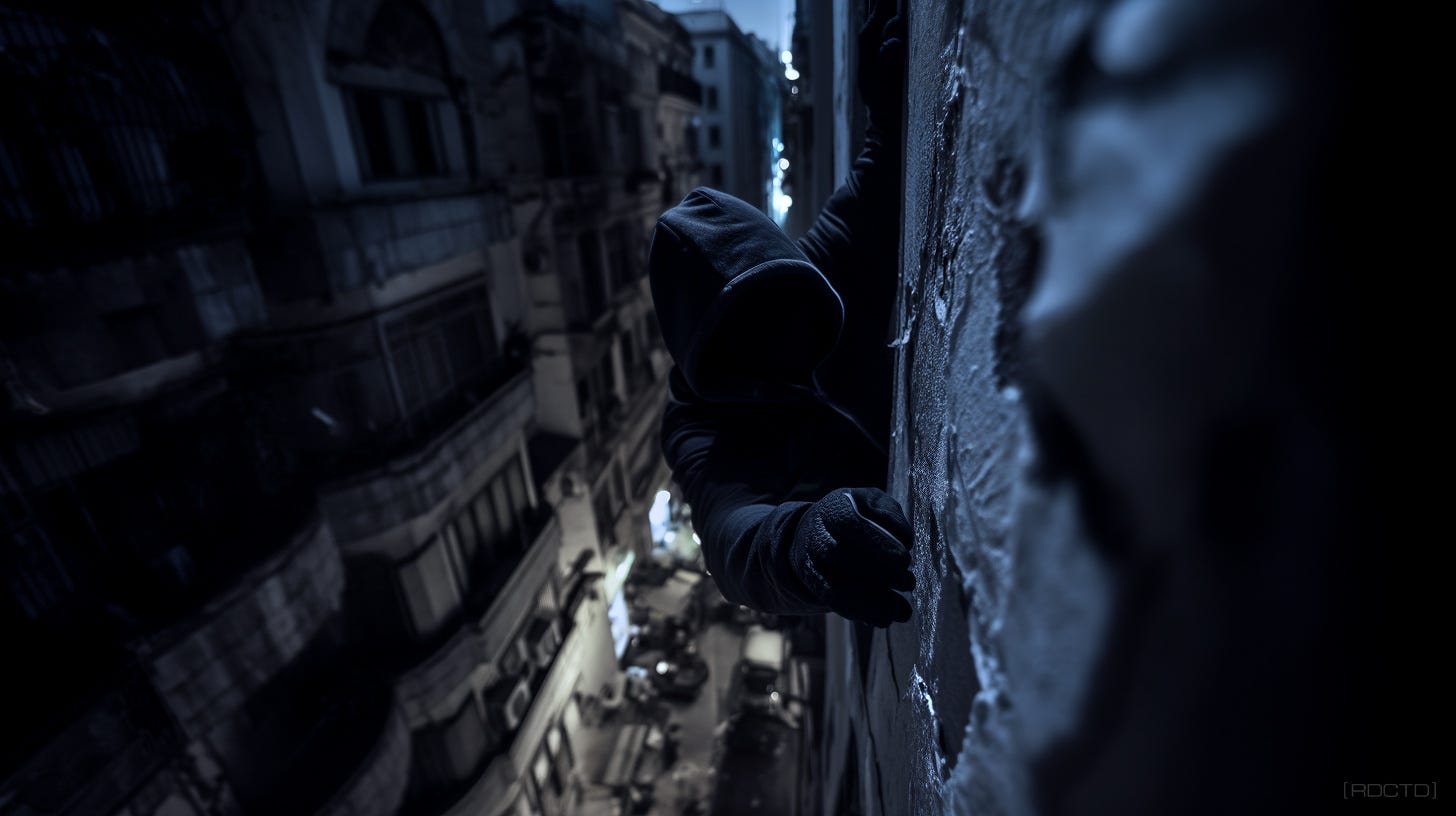Non-Linear Evasion: The Art of the Unexpected Exit
Escape is art. Make it abstract.
If they can predict your move, they can intercept it. Forget straight lines, escape is thinking sideways, doubling back, and using chaos as cover.
When it comes to getting ghost, really slipping the net, most rookies make one fatal mistake: they think escape means “run fast, run straight.” That’s dead wrong. A straight line’s the first thing a tracker, surveillance team, or even a drone looks for.
If you’re thinking linearly, you’re already predictable. And if you’re predictable, you’re compromised. Real evasion? That’s all about non-linear movement. You don’t just break contact, you disappear in a direction no one’s expecting.
Principle One: Predictability Gets You Caught
The first rule of slipping the net is simple: don’t do what they expect. The moment you break contact, every move you make is being fed into someone’s playbook. If you’re thinking like a civilian (running straight, running fast) you’re feeding them patterns.
Let’s say you’ve just broken surveillance. Maybe you popped a tail or triggered an alert in a contested zone. What do they assume you’ll do? Bolt in the most obvious escape vector; usually away from the threat, toward known safe houses, exfil routes, or friendly territory.
That’s why you don’t go there.
Tradecraft Rule: Don’t run from danger. Run past it, or even toward it if you have to. Unpredictability buys you time.
An operative I worked with once ran toward the pursuing team, ducked into a crowd, changed his gait and appearance mid-flow, and peeled off at a 45-degree angle. Surveillance team blew right past him. That’s non-linear.
Another time, I had to break contact in Eastern Europe after a meet went sideways. Instead of heading for the border, I looped through a series of bus terminals and walked straight into a train station. Bought a ticket south, then exited through a side gate and hitchhiked north. By the time they figured out I hadn’t even boarded the train, I was three hours ahead in the opposite direction.
That’s the power of not doing the expected, it fractures their response window and turns their coordination into hesitation.
Principle Two: Layered Movement Throws Off Tracking
You don’t shake a tail with one slick move, you shake it with layers. One break in the pattern isn’t enough; you’ve got to stack misdirection, speed changes, appearance shifts, and environment manipulation until your trail falls apart behind you. Think of evasion like an onion, every layer you add peels you further away from their eyes.
Non-linear evasion isn’t just zig-zagging like you’re dodging sniper fire. It’s strategic misdirection. Think chess, not checkers. This is a basic move structure:
I) Break Line of Sight
II) Change Direction Immediately
III) Alter Appearance or Profile
IV) Blend into Environment
V) Move Again – Not Toward Safety, but Away from Prediction
This applies in urban or rural environments. In an alley chase, duck through a back door and exit out the front. Then instead of heading down the street, jump a fence and double back into a parallel block. In the woods? Make a decoy trail, then climb or crawl perpendicular to your track before changing elevation.
Every shift forces the tracker to stop, reassess, and adjust. Giving you precious seconds to widen the gap.
I had a contact in Caracas who’d mastered this. He carried a reversible jacket, mirrored sunglasses, and a collapsible cap. After he broke contact with a surveillance unit, he’d swap his look, reverse course at an intersection, hop a moto-taxi for two blocks, then disappear on foot into a market crowd. Each layer diluted the accuracy of the last known position, until the trail went completely cold.
That’s how you throw off pursuit, not with one move, but with five in rapid succession that don’t line up with any known escape doctrine. That’s tradecraft.
Principle Three: Think Like the Predator
You want to disappear? Then stop thinking like prey. Prey runs in panic, operatives calculate like predators. To beat surveillance or tracking, you need to understand how they hunt. Learn how they track.
• Visual surveillance? They track movement, direction, and pace.
• Thermal drones? They scan patterns of escape along probable lines.
• Human trackers? They look for broken brush, boot prints, and logical exits.
So don’t leave logic on the trail. Leave chaos.
One of the best I ever saw hit a dead sprint into a building with multiple exits, then took a dumbwaiter up four floors and rappelled out the back. Instead of going ground-level and out the back like everyone expected, he elevated, literally and tactically. That’s textbook non-linear.
The key is thinking about what the other side sees, because they’re reacting to your movements and predicting them. They’ve got a behavioral model in their head, and every decision you make is a data point reinforcing or breaking that model. Flip the script, do what a rational person wouldn’t.
That forces them to throw out their assumptions and rework their strategy mid-hunt. That’s when you disappear, not just from their eyes, but from their plans.
Principle Four: Terrain Is Your Weapon
Every piece of ground you move through is either helping you vanish or helping them catch you. Terrain isn’t just backdrop, it’s a tool, and sometimes a weapon. If you’re not using the environment to break rhythm and rewrite your movement signature, you’re doing it wrong.
Concrete or jungle, terrain can be manipulated. Corners, stairwells, rivers, rooftops, they’re all force multipliers if you know how to use ’em.
• Stairwells: Go up two floors, then down one. Exit on a different floor.
• Markets: Blend into foot traffic, change hats or jackets, and reverse course with confidence.
• Forest: Cross a stream downcurrent, then walk in the water and exit mid-point.
Non-linear is a path and a mindset. You’re not just escaping to a location, you’re escaping from prediction.
One time in Istanbul, I was boxed into a tight urban quadrant after a meet got blown. I used a packed bazaar to my advantage; cut through a side alley, climbed onto a vendor’s roof using a stacked crate, then jumped two rooftops over to a different block. From there, I descended into a small courtyard, walked into a carpet shop, changed clothes behind a hanging curtain, and walked out the front door as someone else.
That wasn’t luck, it was knowing the terrain better than the people hunting me. The ground always gives you an edge if you know how to read it.
Disappear by Becoming Noise
Keep reading with a 7-day free trial
Subscribe to Covert Operative Guide to keep reading this post and get 7 days of free access to the full post archives.




